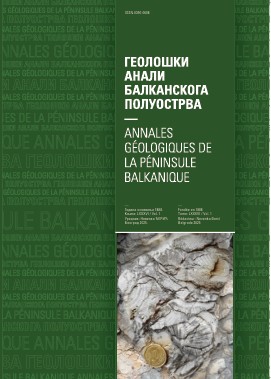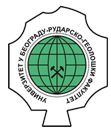Petrološke i petrohemijske karakteristike tercijarnih bazalta Rudnika (Srbija)
Petrologic and petrochemical characteristics of Tertiary basalts of Rudnik Mountain (Serbia)
Abstract
Basalts were registered in three localities on the Rudnik Mountain: in the Vasići hamlet (the Mutanj village), 300 m south from the Lipa peak (552 m) and at the source of the Šilopaj river. According to their geologic position the age of these rocks were determined as posttortonian.
Basalts consist of phenocrysts of monoclinic pyroxenes, rarely of olivine and plagioclases, and the ground mass contains monoclinic pyroxenes, glass, opaque mineral, and rarely plagioclases. The content of major elements shows that basalts are of alkalic, mostly potassic character. The ratio AlVI/AlIV in monoclinic pyroxenes indicated their formation under conditions with high to medium pressure. According to chemical composition of these pyroxenes it concluded that they were formed at 950- 1000°C.
Copyright (c) 1997 Geološki anali Balkanskoga poluostrva

This work is licensed under a Creative Commons Attribution 4.0 International License.










